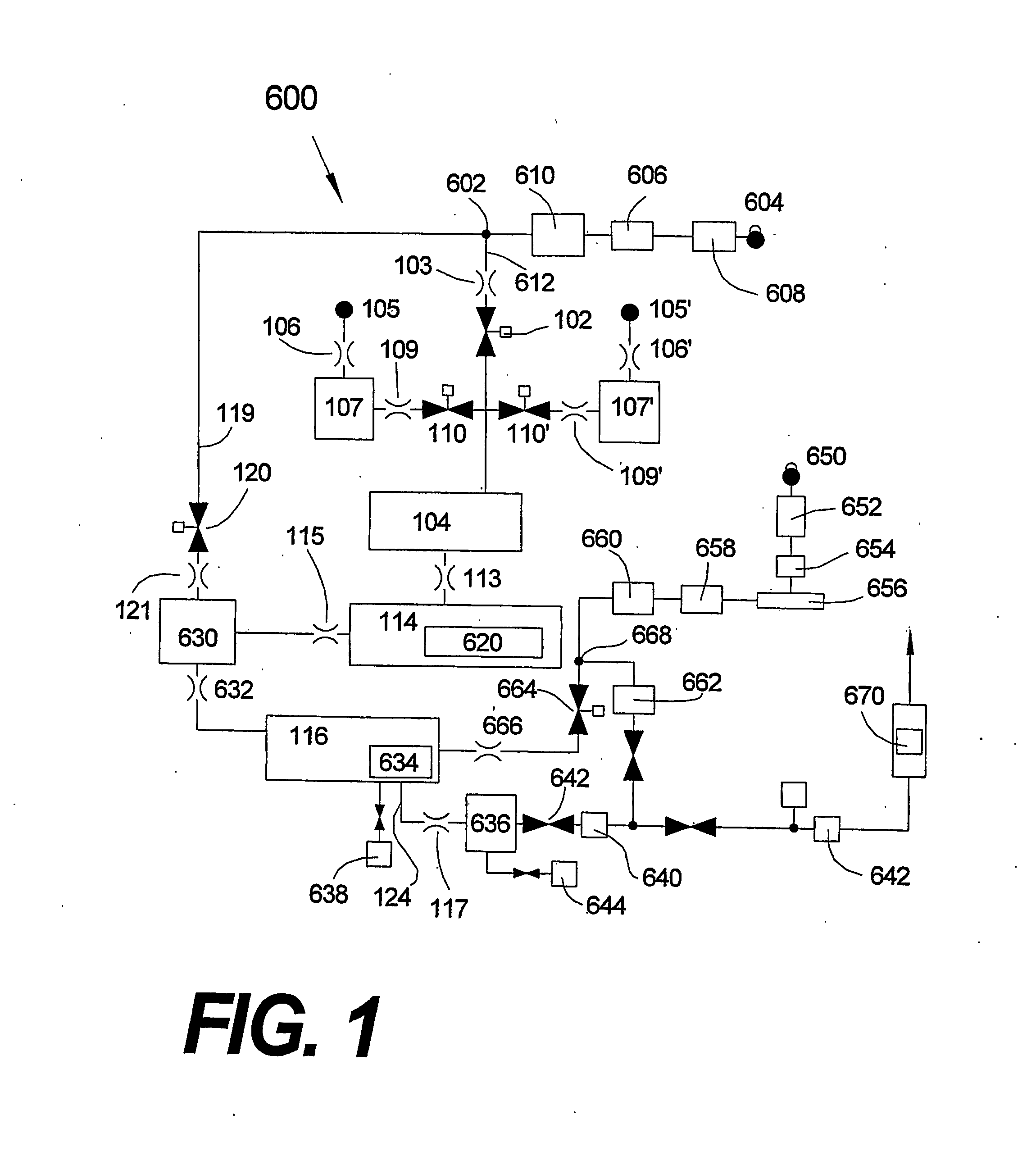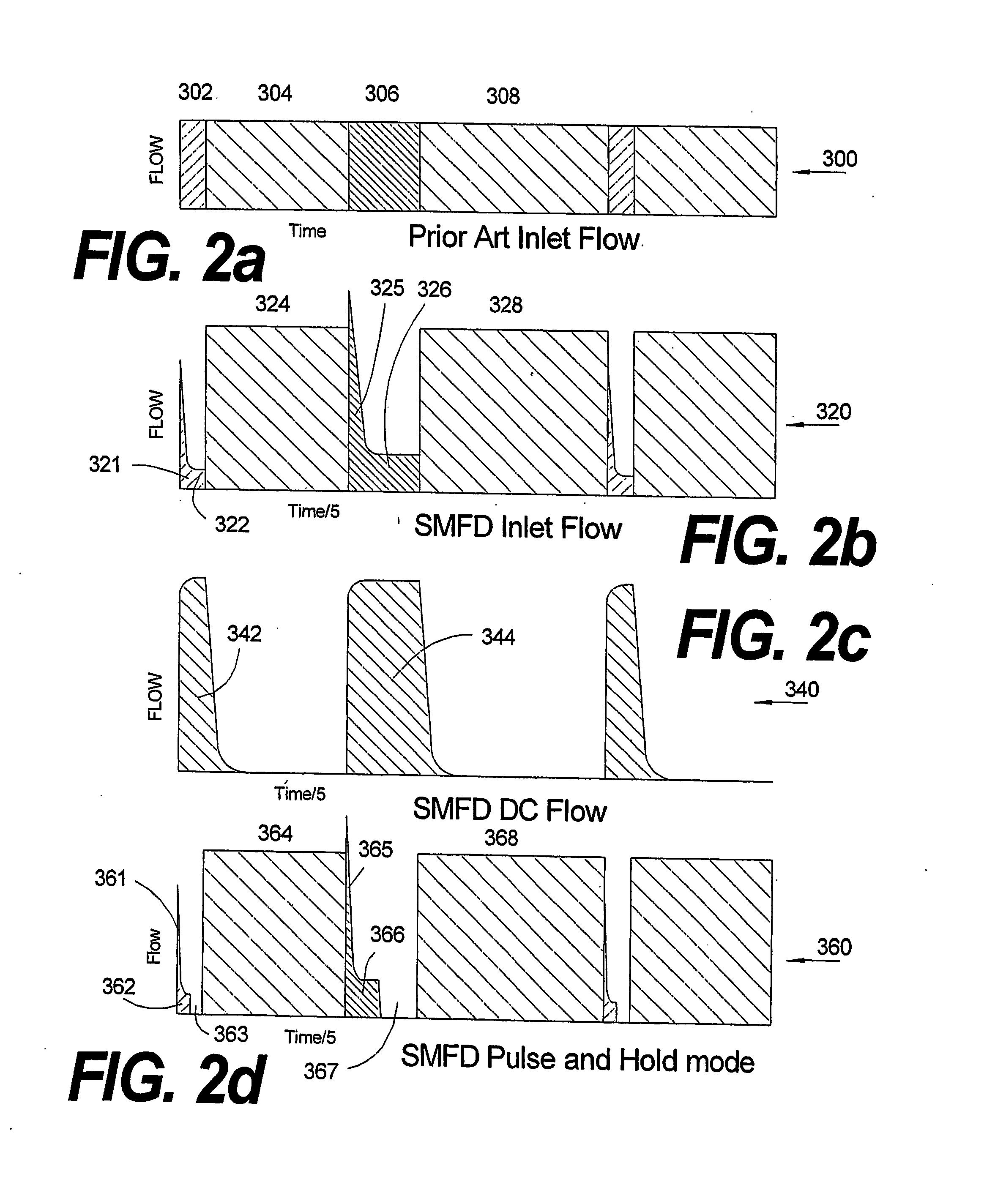Ald Apparatus and Method
a technology of al applied in the direction of vacuum evaporation coating, chemically reactive gas, crystal growth process, etc., can solve the problems of short equipment uptime, deterioration of performance of existing ald apparatus, and inability to cost-effectively implement ald systems and methods for manufacturing semiconductor devices and other devices, etc., to enhance the advantages of smfd-ald apparatus and method, improve film quality, and enhance material utilization efficiency
- Summary
- Abstract
- Description
- Claims
- Application Information
AI Technical Summary
Benefits of technology
Problems solved by technology
Method used
Image
Examples
Embodiment Construction
[0063] The invention is described herein with reference to FIGS. 1-22. For the sake of clarity, the same reference numerals are used in several figures to refer to similar or identical components. It should be understood that the structures and systems depicted in schematic form in FIGS. 1-22 serve explanatory purposes and are not precise depictions of actual structures and systems in accordance with the invention. Furthermore, the embodiments described herein are exemplary and are not intended to limit the scope of the invention, which is defined in the invention summary and in the claims below.
[0064]FIG. 1 depicts a flow diagram of a basic embodiment of a synchronously modulated flow-draw (“SMFD”) ALD system 600 in accordance with the invention described in U.S. patent application Ser. No. 10 / 347575, PCT Application No. US03 / 01548, and the improvements that are disclosed in this application.
[0065] System 600 comprises a pressure-stabilized inert, purge-gas source 602 of a purge ...
PUM
| Property | Measurement | Unit |
|---|---|---|
| thickness | aaaaa | aaaaa |
| response time | aaaaa | aaaaa |
| temperatures | aaaaa | aaaaa |
Abstract
Description
Claims
Application Information
 Login to View More
Login to View More - R&D
- Intellectual Property
- Life Sciences
- Materials
- Tech Scout
- Unparalleled Data Quality
- Higher Quality Content
- 60% Fewer Hallucinations
Browse by: Latest US Patents, China's latest patents, Technical Efficacy Thesaurus, Application Domain, Technology Topic, Popular Technical Reports.
© 2025 PatSnap. All rights reserved.Legal|Privacy policy|Modern Slavery Act Transparency Statement|Sitemap|About US| Contact US: help@patsnap.com



